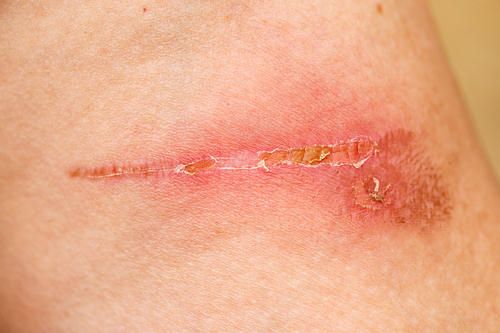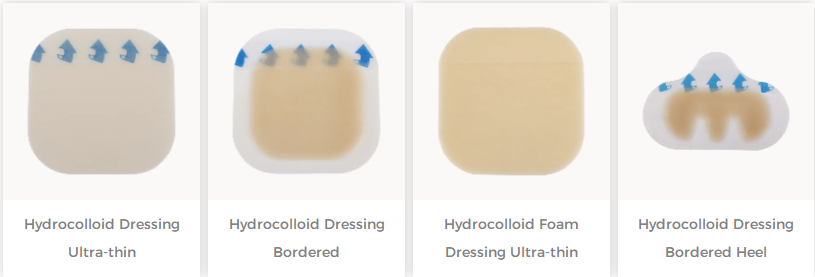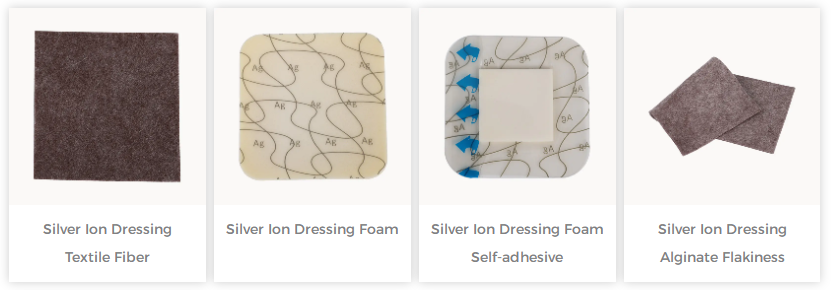The wound is the damage to normal skin caused by external injury factors, which will also affect the quality of life of patients. So how to correctly assess the wound, treat the wound in stages, and choose the appropriate dressing and treatment method is extremely critical. This article summarizes the classification and treatment of wounds, please follow me to take a look.
Classification of wounds:
According to the length of wound healing time: acute wound, chronic wound;
According to the nature of the wound: open wound closed wound;
According to the anatomical depth of the wound and soft tissue: superficial wound, half-thickness wound, full-thickness wound;
Depending on the cause of injury: mechanical or traumatic wounds, thermal and chemical wounds, ulcerative wounds, radiation-induced wounds;
According to the color: red, yellow, black, mixed wound.
Acute wounds refer to wounds that form suddenly and heal quickly. The healing method of such wounds is usually primary healing, such as elective surgical incisions;
Chronic wounds refer to skin tissue damage caused by various reasons, and the healing process is longer than 8 weeks, such as ulcerative wounds.
International Wound Classification Method :
The wound severity classification method is jointly developed by the International Association for Ostomy Therapy and the National Pressure Ulcer Society of the United States and is applicable to all kinds of wounds, including pressure ulcers.
Stage I: The skin is intact, and there are erythema marks that will not turn white with finger pressure, which can be corrected by nursing measures.
Stage II: Partial loss of the epidermis or (and) dermis, which has not yet penetrated the dermis, and the bottom of the wound is moist and pink, very painful, without necrotic tissue, and there are superficial ruptures, blisters, or small shallow pits (cause of the pain): The nerve ending receptors in the dermis is exposed to the air).
Stage III: The epidermis and dermis are completely lost, and the subcutaneous tissue is penetrated, but the fascia is not penetrated, and the muscle layer has not yet been penetrated. Moderately deep dimples with possible necrotic tissue, dead space, exudate, or infection. There is no pain at the base of the wound because the nerve is damaged.
Stage IV: Extensive destruction, penetrating subcutaneous fat to fascia, muscle, or bone. There may be necrotic tissue, burrowing holes, fistulas, exudate, or infection, and the base of the wound is not painful.
Treatment of wounds :
In order to slow down the wound healing period, it is necessary to reduce the factors that affect wound healing, evaluate the different periods of wound healing, and provide better wound care for wound changes in different periods.
Stage I wound :
The skin is intact without ulceration, usually due to temporary ischemia of the skin caused by external pressure, appearing, swollen, hot, numb, or tender. This stage generally focuses on improving blood circulation, relieving redness, protecting epithelial tissue, and preventing skin ulceration. If the skin swelling is caused by trauma and it has not exceeded 24 hours, apply ice compresses for no more than 10 minutes to relieve pain and reduce swelling.
Stage II wound :
Wounds are usually ulcerated in the dermis and epidermis, and the wound is not deep. Hydrocolloid dressing can be used at this stage. Because hydrocolloid dressing maintains a moist environment on the surface of the wound, it can assist the migration of epithelial cells from the edge of the wound to the wound. Accelerated epithelialization of wounds. When the nerve endings are in a moist environment, it also reduces the pain of the wound to a certain extent. Hydrocolloid dressing can provide the wound with a slightly acidic airtight space that is conducive to wound healing, is conducive to wound healing, and promotes the formation of skin, tissue, and capillaries under the wound surface. The formation of capillaries provides a channel for the transport of human nutrients to the wound surface, thus indirectly accelerating tissue repair and the formation of granulation tissue. The smooth surface of hydrocolloid dressing effectively reduces friction and shearing forces.
Ⅲ Wound :
the wound at this stage is tissue defect and infection, the appearance of necrotic tissue, and more exudate. A series of hydrogel dressings are optional for autologous debridement. The mechanism of action of the hydrogel is to rely on the collagen-degrading enzymes in the wound's own exudate to decompose the necrotic material in a moist environment. At the same time, alginate dressing can be used to absorb exudate and control infection. Alginate dressing can absorb liquid equivalent to 20 times its own weight. Can effectively control exudation, thereby prolonging the dressing change time. At the same time, because this type of dressing contains a large number of calcium ions, it can play a slight hemostatic effect in the ion exchange process with the exudate of the wound. After the necrotic tissue is removed and the infection problem is under control, hydrocolloid dressing can still be used to promote the growth of granulation and epithelial tissue.
Ⅳ wound :
this phase is a severe infection, large tissue defect, or scab of necrotic tissue, and antibacterial dressing or negative pressure wound treatment can be used. According to the specific conditions of the wound, choose an antibacterial dressing that needs to absorb exudate or an antibacterial dressing that can autolyze and debride the wound. Silver ion dressing is a local wound care dressing derived from ionic silver. This dressing releases a steady amount of silver into the wound and provides an antibacterial or antimicrobial effect. Depending on the amount of exudate and bacteria in the wound, the silver is activated from the dressing onto the wound surface. Silver dressings are available as foam dressings, hydrocolloids, barriers, and carbon cloth dressings. Silver dressings can be used with other dressings to reduce bacterial load, inhibit exudate, and optimize the appearance of wound granulation tissue. It can effectively inhibit the growth of pathogenic microorganisms at the wound, achieve the antibacterial effect, and finally achieve the purpose of transforming the fourth-stage wound into the third-stage wound. Negative pressure wound treatment is to apply continuous negative pressure to the wound to accelerate blood circulation in the wound, promote new blood vessels to enter the wound, stimulate the growth of granulation tissue, fully drain, reduce edema, reduce pollution, inhibit bacterial growth, and accelerate wound healing.
In short, before the treatment of the wound, it is necessary to conduct a complete assessment of the wound, formulate a plan and re-treat it. Without a correct judgment on the wound stage, there is no way to formulate the next treatment plan, and no dressing is suitable for all wounds or wounds. All periods of the wound.
Presumably, everyone now has a clearer understanding and understanding of the wound problem. Please also learn to protect yourself in daily life, and do necessary aerobic warm-up exercises before exercising, which can be used to reduce the chance of falling injuries.
For more information on Innomed® hydrocolloid dressing, refer to the previous articles. If you have customized needs, you are welcome to contact us; we will serve you wholeheartedly.
At Longterm Medical, we transform this data by innovating and developing products that make life easier for those who need loving care.
Literature reference: Lu Fang, Feng Bilong. Wound classification and treatment principles[J]. Chinese Clinical Nursing, 2010,2(04):365-367.
Luo Xiaofeng, Wang Xianyuan. Physiological functions of the skin and treatment of wounds[J]. Foreign Medicine. Nursing Volume, 2002(12):549-552.
Wang Zhenyun.Development and clinical application of medical wound dressing[J].Chinese Journal of Nursing,2006(01):87-88.
Editor: kiki Jia
Date: January 11, 2023

 English
English عربى
عربى Español
Español русский
русский 中文简体
中文简体








